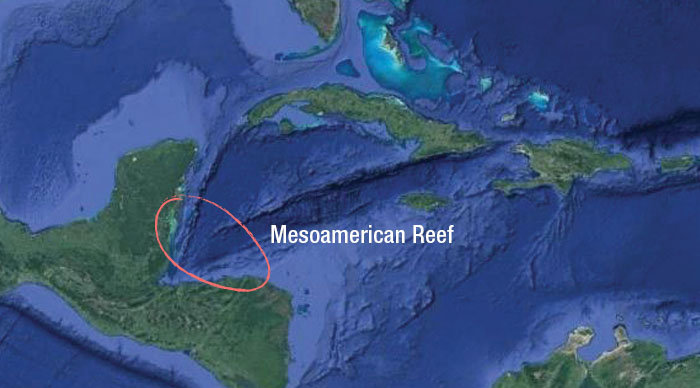By CORAL Staff | CORAL Staff
Coral reefs face many natural and human-caused threats. In March 2017, a British-owned cruise ship ran aground at Raj Ampat causing significant damage to roughly 1,600 square meters of coral reefs. Recent studies in West Maui have shown that land-based pollution is reducing water quality and covering corals in sediment. Extensive coverage about bleaching on the Great Barrier Reef reminds us that these delicate ecosystems are in crisis.
Fortunately, we have a solution that will help corals grow, reproduce and continue to build reefs. We can create Adaptive Reefscapes, which are networks of healthy reefs that is Diverse, Connected and Large. But what’s the right size for an Adaptive Reefscape? It turns out that there may be a Goldilocks solution that’s not too big and not too small.
Adaptive Reefscapes should be as big as possible to reduce problems caused by large disturbances; a small Reefscape might be at risk from one major hurricane or bleaching event, but a large Reefscape is more likely to include some reefs that are unharmed and can be sources of future recolonization. Large Reefscapes are also more likely to include lots of different kinds of reefs and corals. This diversity, which we described previously, acts as options for the future. Conversely, if a Reefscape is too big, baby corals will not be able to spread readily from one reef to the next, slowing down the potential for adaptation. By creating Adaptive Reefscapes that balance the need to be large and connected, we can find a Goldilocks solution that’s just right.
Project reports on GlobalGiving are posted directly to globalgiving.org by Project Leaders as they are completed, generally every 3-4 months. To protect the integrity of these documents, GlobalGiving does not alter them; therefore you may find some language or formatting issues.
If you donate to this project or have donated to this project, you can receive an email when this project posts a report. You can also subscribe for reports without donating.
Support this important cause by creating a personalized fundraising page.
Start a Fundraiser
